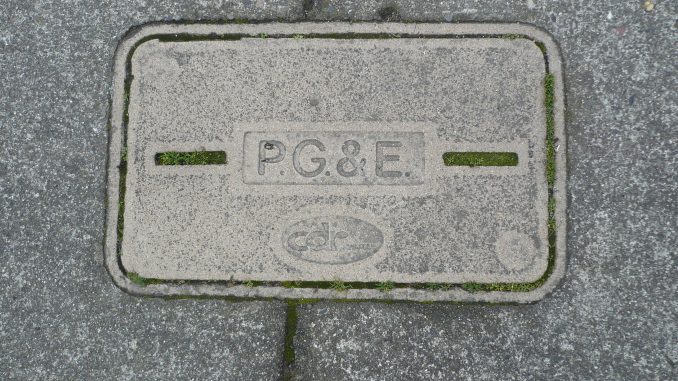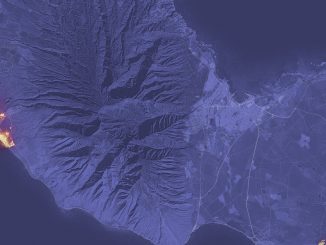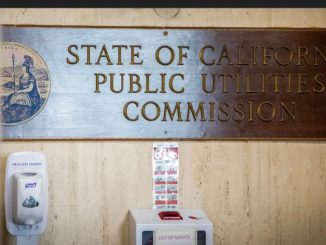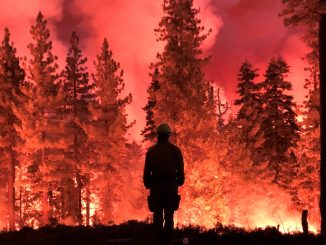
This story is produced by the award-winning journalism nonprofit Capital & Main, and co-published here with permission.
Pacific Gas and Electric Company, which dominates the supply of power to most of Northern and Central California, just hit its customers with a whopping $33 a month rate hike. The 13 percent increase to the average bill took effect on Jan. 1.
And PG&E, an investor-owned utility, is just getting warmed up.
Only a few weeks after receiving approval from the California Public Utilities Commission (CPUC) for that roughly $400 annual rate hike late last year, PG&E went right back to the well. In a Dec. 1 filing, the utility asked the CPUC for permission to pass along another $2 billion in cost overruns as part of its ongoing process of updating wildfire mitigation and repairing storm damage.
And despite the fact that PG&E is trying to recover costs that are well above what the CPUC originally authorized it to spend, it’s also asking the state regulator to allow it to start collecting 85 percent of that $2 billion beginning in March — before the CPUC has begun to decide whether the utility is entitled to recover the costs. If the commission decides against PG&E or determines that only a lower amount can be collected, the utility would have to refund the difference.
“Talk about audacity — not only do they want to charge for what they didn’t get authorization to spend ahead of time, but they also want to collect most of the money before the commission even authorizes the retroactive amount,” said Mark Toney, head of the utility reform network TURN, which provided Capital & Main with several documents related to PG&E’s multiple requests for rate increases. “It’s certainly significant.”
Toney estimated that customers will see at least $12 per month and as much as $20 per month added to their bills if the CPUC approves this latest rate hike and early collection plan. Added to the new $33 monthly increase, average annual bills could jump between $540 and $640 this year alone.
PG&E officials did not immediately respond to requests for comment from Capital & Main. In a previous media statement, the company said, “Every day, PG&E is making the electric system safer and stronger for our customers in response to evolving climate challenges,” including “important safety work directed by our regulators.”
The utility is the state’s largest and one of the largest in the nation, supplying electricity and natural gas to 16 million Californians, from Eureka in the north to Bakersfield in the Central Valley. It also has declared bankruptcy twice, most recently in 2019 after a series of devastating California wildfires for which the company was found financially responsible.
Much of the safety repair work now being done is the result of the publicly traded utility’s decades of weak efforts to upgrade its aging infrastructure, critics say. PG&E has been found responsible for wildfires in 2017, 2018, 2019 and 2021.
But the state regulatory commission has allowed PG&E to pass along to customers much of the cost of those repairs and upgrades — and the latest filing makes it clear that the utility expects the CPUC to continue that trend.
A 2019 bill passed by the California Legislature and signed by Gov. Gavin Newsom established the $21 billion California Wildfire Fund to cover wildfire damage liabilities. The law called for PG&E customers to cover half of that $21 billion through rate charges, with the company’s shareholders providing the other half.
Critically, though, the bill also allows PG&E to spend more than the CPUC authorizes for wildfire mitigation measures and storm repair work in any given period. It sets up a system through which the utility can simply bank those cost overruns in a “memorandum account” or other bookkeeping vehicle, then come to the CPUC after the fact and ask to bill customers for the overspend.
That’s what is happening here. Its Dec. 1 filing is for the retroactive recovery of $2 billion in costs that the CPUC never authorized — and PG&E is pushing to collect more than $1.5 billion of that over a one-year period beginning in March.
In the filing, PG&E’s attorneys argue that hitting customers with another rate hike now will actually save $67 million in interest costs over the next year. (The company’s guessing that the CPUC will take that long to issue a final ruling on the amount.) The utility has just initiated the $33 average rate increase that was approved late last year, but its attorneys say in the filing that PG&E is under “extraordinary financial pressure” and faces potential credit downgrades if it isn’t allowed to scoop up yet more ratepayer money.
The CPUC has approved such early-collection plans before, so what PG&E is asking isn’t entirely unprecedented. But while its customers are making budget adjustments to deal with rate increases, the utility itself isn’t overly concerned with such things: By its own accounting, PG&E spent $14.3 billion on wildfire mitigation from 2020 to 2022 despite being authorized by the commission for only $4.7 billion.
Toney said that PG&E’s ultimate goal is to recover all of that overspend on the backs of its ratepayers, one hike at a time — one reason TURN is pushing for a cap on the percent of increase a utility can ask in any given year. “There simply can’t be no limits to what they can ask for,” the advocate said, but that is exactly what is in play here in 2024.




State sanctioned monopolies are like parasites. PG&E will suck it’s victims dry , if allowed.
The article you re-published by Capital & Main ( Mark Kreidler) about the price gouging of customers by PG&E, with the CPUC complicit in this act, is very disturbing. Many on social media platforms are complaining about the energy bill that goes up and up every month, and there seems to be no recourse to stop it. I would like to see reporting on a group/organization/grass roots action…to put a stop to it, or get the issue on a ballot for the public to vote on. More info on this, please!